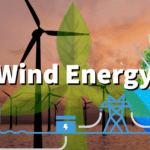In the dynamic landscape of renewable energy, sustainable energy storage stands out as a critical component. It addresses the intermittent nature of renewable sources and enhances the reliability and efficiency of energy systems. This article explores the historical evolution of sustainable energy storage, the key technologies that define it, its role in advancing renewable energy adoption, and the transformative possibility it holds for a sustainable energy future.
Historical Evolution of Sustainable Energy Storage
The need for energy storage has been intrinsic to human civilization, from the earliest use of mechanical devices to store energy to the development of batteries in the 19th century. The modern concept of sustainable energy storage gained prominence alongside the rise of renewable energy sources in the late 20th century.
Rise of Renewable Energy and Storage
In the late 20th century, we witnessed a surge in interest and assets in renewable energy sources such as solar and wind power. As these sources became more integrated into the energy mix, the need for efficient and sustainable energy storage solutions became evident to address the intermittent nature of renewables and ensure a reliable power supply.
Technological Advancements – Catalysts for Innovation
Advances in materials science, electrochemistry, and engineering have played a pivotal role in shaping sustainable energy storage technologies. Breakthroughs in battery chemistry, energy conversion, and grid management have contributed to the evolution of energy storage systems, making them more efficient, affordable, and environmentally friendly.
Key Technologies Defining Sustainable Energy Storage
Sustainable energy storage encompasses a range of technologies that store and release energy efficiently while minimizing environmental impact. Understanding the key technologies is essential for grasping the comprehensive nature of sustainable energy storage.
Lithium-Ion Batteries – Powering the Transition
Lithium-ion batteries have become the cornerstone of sustainable energy storage, powering electric vehicles and serving as energy storage solutions for homes, businesses, and grids. Their high energy density, long cycle life, and rapid charge/discharge capabilities make them a versatile and widely adopted technology.
Pumped Hydro Storage – Harnessing Gravitational Potential
Pumped hydro storage is a mature and widely deployed technology that leverages gravitational potential energy. During periods of excess electricity, water is pumped to an elevated reservoir, and during peak demand, it is released to generate hydroelectric power. This method provides grid-scale storage and has a long operational life.
Flywheel Energy Storage – Spinning Kinetic Energy
Flywheel energy storage utilizes spinning mass to store and release energy. Mechanical energy is transformed into kinetic energy by accelerating a flywheel, and when needed, the kinetic energy is converted back into electricity. Flywheels offer fast response times and are well-suited for short-duration energy storage applications.
Solid-State Batteries – Advancing Battery Technology
Solid-state batteries represent the next frontier in battery technology, replacing traditional liquid electrolytes with solid materials. These batteries offer increased energy density, longer cycle life, and improved safety, paving the way for more efficient and sustainable energy storage solutions.
Role in Advancing Renewable Energy Adoption
Sustainable energy storage plays a pivotal role in overcoming the challenges associated with the intermittency of renewable energy sources, unlocking their full potential, and accelerating the transition to a cleaner and more sustainable energy landscape.
Grid Stability and Reliability – Balancing Supply and Demand
Energy storage systems contribute to grid stability by balancing the supply and demand of electricity. By storing excess energy during periods of low demand and releasing it during peak demand, these systems enhance the reliability and resilience of the electrical grid.
Integration of Renewables – Smoothing Power Output
Renewable energy sources, such as solar and wind, are inherently variable. Sustainable energy storage mitigates the intermittency of these sources by storing entry energy when it is abundant and releasing it when generation is low, ensuring a consistent and reliable power supply.
Microgrid and Decentralized Energy – Enhancing Resilience
Sustainable energy storage enables the creation of microgrids and decentralized energy systems. By storing and distributing energy locally, communities can enhance energy resilience, reduce dependence on centralized grids, and better withstand disruptions.
Electrification of Transportation – Powering the EV Revolution
Energy storage is a cornerstone of transportation electrification, particularly in electric vehicles (EVs). Advances in battery technology and charging infrastructure contribute to the widespread adoption of EVs, reducing reliance on fossil fuels and lowering transportation-related emissions.
Transformative Potential and Future Outlook
The trajectory of sustainable energy storage points towards a future characterized by increased efficiency, affordability, and widespread adoption, contributing to a more sustainable and resilient energy ecosystem.
Advanced Energy Storage Technologies – Unlocking New Capabilities
Ongoing research and growth in energy storage technologies, such as next-generation batteries and advanced materials, hold the potential to unlock new capabilities. Innovations in energy density, cycle life, and cost-effectiveness will further enhance the role of sustainable energy storage in the broader energy landscape.
Hybrid Energy Storage Systems – Maximizing Synergies
Hybrid energy storage systems combine multiple storage technologies to maximize synergies and address specific energy storage needs. Integrating complementary technologies, such as lithium-ion batteries with flywheels or supercapacitors, allows for a more versatile and efficient approach to energy storage.
Energy Storage Policies and Regulations – Fostering Growth
Implementing supportive procedures and regulations is crucial for fostering the growth of sustainable energy storage. Incentives for research and development, streamlined permitting processes, and market mechanisms that value the services provided by energy storage contribute to its broader adoption.
Conclusion
Sustainable energy storage is at the forefront of the global transition towards a cleaner, more resilient, and sustainable energy future. From advancing renewable energy integration to powering electric vehicles and enhancing grid stability, energy storage’s role is multifaceted and transformative. As technology continues to evolve and global efforts intensify, sustainable energy storage will play a central role in shaping a future where clean and reliable energy is accessible to all.












